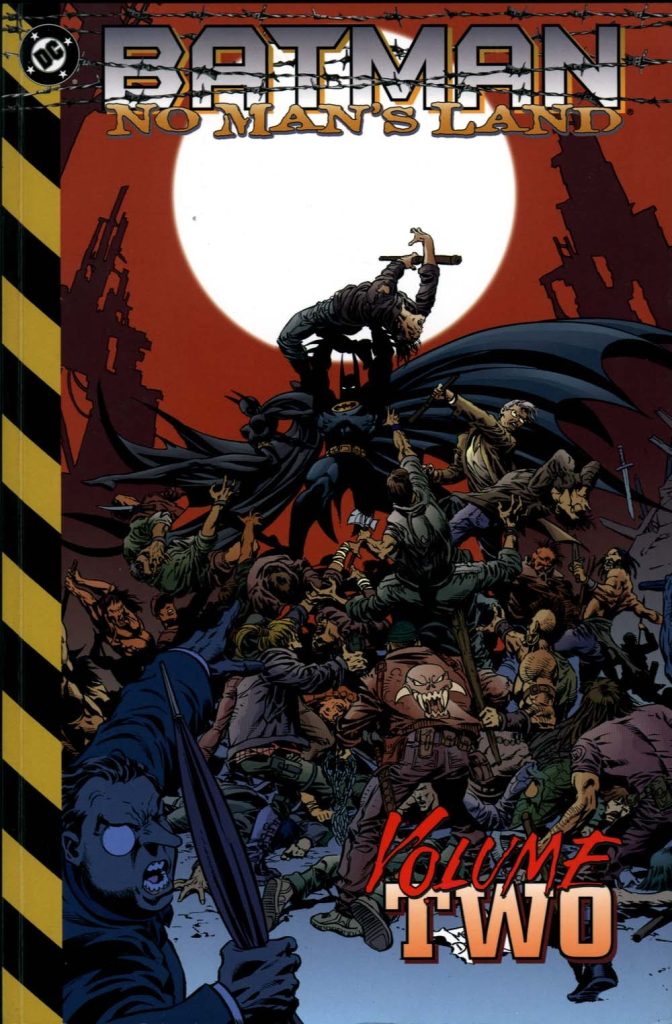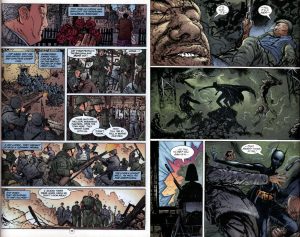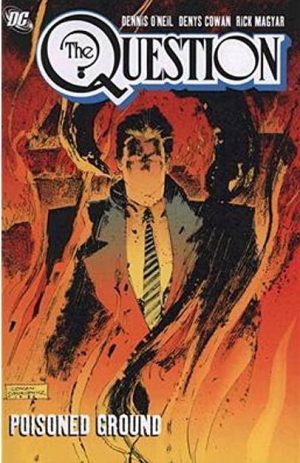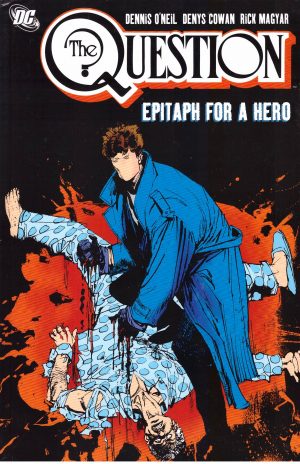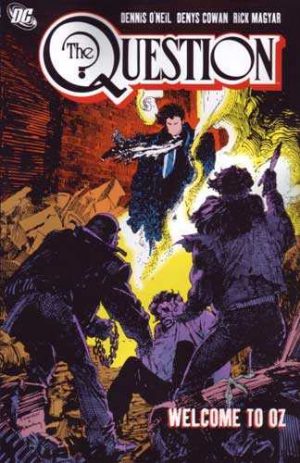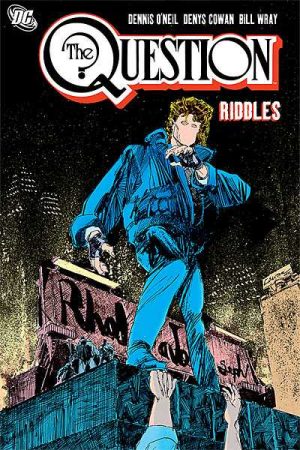Review by Frank Plowright
Considering repairing Gotham after an earthquake too expensive, the national authorities evacuated, closed off and abandoned it. Those remaining in the city are largely without the means to be anywhere else, or criminals taking advantage of weakness and chaos.
That so many creators are credited on a graphic novel not sold as an anthology is rarely a sign of quality, but this bucks the trend. Volume One set the scene, and the assorted creators are given pretty much free rein to take a look at how life might be for ordinary people under those circumstances, from which they produce a series of tight little dramas. Unusually for a Batman series of the 1990s, the artists are also given free rein to depart from the standard action style, and they range from the detailed precision of Phil Winslade and Guy Davis (sample art left) being not too far removed from Victorian engravings, to the wild cartooning of Jason Pearson. D’Israeli’s Batman is action figure static, but his imaginative pages are otherwise fine, and it’s only really Frank Teran’s schizoid contribution that doesn’t hit the spot (sample art right). Many influences are apparent, but the switches of style lead to inconsistency, and his layouts are unimaginative.
The writers least known to comic readers are Bob Gale and Lisa Klink. Rather than newcomers, though, both are acclaimed screenwriters, Gale on films and Klink responsible for many episodes of Star Trek. The TV need for strong human drama is apparent in the character supplied to the man who won’t leave his home, and she throws in a great final confrontation. Gale takes a turn around a few Gotham residents before settling into a memorable story about Thomas Wayne.
Greg Rucka’s writing is also strong on character, and while Teran’s art doesn’t bring out the full grim nature of what Black Mask is up to, Pearson draws the hell out of Renee Montoya attempting to protect her family’s grocery store and meeting Two-Face. This isn’t Gotham as normal, which is brought out as their meetings continue.
Ian Edginton and D’Israeli open the collection, and while it’s not apparent from the art, Edginton’s is the most traditional Batman story. It’s good, but wouldn’t need greatly changed to occur at any time in Batman’s continuity. Very much stuck in 1990s continuity is Dennis O’Neill and Chris Renaud’s focus on supporting character Harold, and his being long forgotten removes much of the impact.
Only the final story is absent from No Man’s Land Volume 1 when the series was reformatted in 2011, shunted to Volume 2, but it is in the first No Man’s Land Omnibus. Rucka and Mike Deodato explore the desire for territorial acquisition even among the ruins of Gotham, either prompted by sheer greed or by the knowledge that all is otherwise lost. Throughout No Man’s Land James Gordon is well portrayed as a man desperate to do the right thing and protect people, but Rucka brings out how this requires compromising lifelong principles. Deodato’s in the process of transitioning from his 1990s Image style to the naturalistic polish he introduced in the early 2000s, and this is over-rendered art. It tells the story, but it’s not pretty.
Volume Two is a good collection of human-based thrillers. Will Volume Three be as good?
